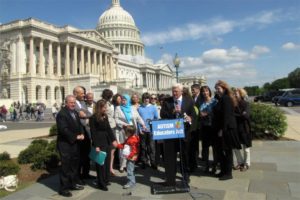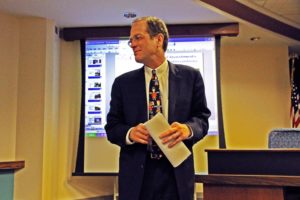 (Updated at 10:40 a.m.) Arlington Public Schools has a lot on its plate in the next several years, as the system takes on boundary changes and building new schools to ease overcrowding. But an issue that’s quietly crept into the system is the increasing loss of senior staff members.
(Updated at 10:40 a.m.) Arlington Public Schools has a lot on its plate in the next several years, as the system takes on boundary changes and building new schools to ease overcrowding. But an issue that’s quietly crept into the system is the increasing loss of senior staff members.
A concerned resident, Hans Bauman, told ARLnow.com that he pored through public records and compiled a list of more than two dozen principals and senior staff members (after the jump) who had left APS since 2010. He called the amount of turnover “unsettling.”
“I am not sure how to assess whether all this turnover is ‘normal’ but I keep hearing concerns about management practices from every single APS person I talk to and I really was stunned when I compiled these lists,” Bauman wrote in an email. “Though the block scheduling fiasco, the current transportation mess, the class size increases and other APS missteps have gotten lots of press, I do think this almost more worrying trend hasn’t been really daylighted.”
APS spokeswoman Linda Erdos confirmed that all of the employees on the list had indeed left their positions, but she said most retired and some took promotions within the system or with other school districts.
“We know that APS has a ‘senior’ corps of highly qualified staff approaching retirement, and it is something we have been watching for a number of years now,” said Erdos.
The situation will only intensify in the coming years. Erdos said in the next decade, there are 63 administrators and around 1,200 other staffers who can retire with full benefits. To be eligible for full retirement benefits, employees must be at least 50 years old with 30 or more years in the Virginia Retirement System.
Of the 1,200 staffers eligible for retirement, more than 600 are teachers. Currently, APS employs more than 2,100 teachers, including some who are part-time.
In addition to the loss of staff due to retirement and relocation, extra employees are necessary to accommodate the growing number of students in the system. Although she didn’t have the breakdown of how many were hired due to expansion and how many were to replace departing staff, Erdos noted that APS hired 230 full-time and 45 part-time teachers for the 2012-13 school year.
“Every year during the budget, we add staff when needed based on the projected enrollment for the coming school year,” Erdos said. “As for the staff who are hired annually, the new staff are a mix to replace retirees and to add staffing to address growing enrollment.”
The loss of senior employees is why Erdos said APS is focused on grooming current staff for more advanced leadership roles. For example, it funds classroom assistants aspiring to become teachers, and supports administrators looking to advance to positions such as principal. It also actively seeks out new teachers by recruiting at colleges and universities around the country, recruiting through publications and professional organizations, and by holding two career fairs each year.
“This is a growing national trend,” said Erdos. “In the next decade, we expect that this trend will continue to be a challenge for APS and all school districts across the country.”
Bauman, however, attributes much of the turnover to mismanagement by Arlington Public Schools.
“The amount of turnover since 2010 is stunning: One third of elementary school principals; Two thirds of middle school principals; Two thirds of the assistant superintendents,” he wrote. “I believe some of this loss can be attributed to the recent emphasis the Board and the Superintendent have placed on generic spreadsheets, standardized tests, and — perhaps most significantly — a huge increase in the use of outside consultants.”
“Outside opinions and objective measures do indeed have a place in every well-run organization. But the recent attrition trend suggests this approach may be going too far,” he continued. “Building space, schedules, staffing, and bus routes have been treated as cells in Excel rather than the complex, unique situations that we can and should manage with greater care in a system of our size.”
See the list that Bauman compiled, after the jump. (more…)











